When you mention narrow gauge railroading to most fans, their thoughts immediately go to Colorado. The D&RGW, RGS, and C&S were long lived lines that ran for hundreds of miles through the Rocky Mountains. Mention preservation, and those same people will bring up the Colorado Railroad Museum, the unique collection of railroad equipment and materials founded by Robert W. Richardson in the 1950s, which continues to preserve and restore both locomotives and equipment in the 21stCentury. However, there is another section of the United States with a heritage of narrow gauge railroading that is not as well-known as Colorado, but is still important to the historical record, and there is a museum dedicated to preserving that heritage by collecting artifacts and restoring equipment from railroads in the region. It is the Southeastern Narrow Gauge & Shortline Museum, and it will be open during the 41st National Narrow Gauge Convention September 1–4, 2021, in Hickory, North Carolina.
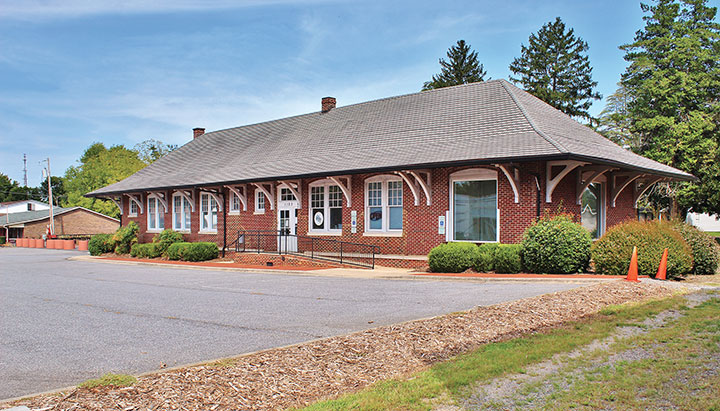
-Photo by James Glenn.
The story of this museum goes back to the 1990s, when a local group of interested people banded together to save the Newton, North Carolina, train depot from demolition. This brick structure, built in 1924 at the junction of the Southern Railway and the Carolina & North-Western Railway, was no longer needed and was going to be torn down. The Newton Depot Authority was formed to save the building. They moved it a half mile down the tracks to a new location, literally using rollers on the rails to move the brick structure. A whole decade was spent restoring the depot and turning it into a museum and small community center. The museum was in the back of the building near the tracks. The freight section held an O scale model railroad, while the passenger section held the community center area, which could be rented by the hour for special events such as birthday parties. This helped pay for maintenance on the building and grounds.
A new element arose in 2007, when the Alexander Chapter of the NRHS was donated a boxcar that had served on the 3-foot gauge Lawndale Railway in North Carolina. A group of volunteers led by George Ritchie, an expert cabinet maker and wood worker, spent three years replacing rotten sections of side and end sills, installing new siding, and fabricating metal parts to restore the boxcar. During that time, historical research found that the boxcar had originally served on the Chester & Lenoir Narrow Gauge Railroad, a 110-mile line which was built between 1872 and 1885 between the namesake cities of Chester, South Carolina, and Lenoir, North Carolina. The C&LNGRR became the Carolina & North-Western in 1896 and was standard gauged in 1902. This restored boxcar had operated on the tracks that ran by the Newton depot, just 110 years before.
By the time this car was finished, plans for a museum around the depot had coalesced into the Southeastern Narrow Gauge & Shortline Museum. This is a collaborative effort between the Newton Depot Authority, which owns the property, and the Alexander NRHS Chapter, which owns most of the railroad equipment. The museum enjoyed local government support from the very beginning, having advocates from both sides of the political spectrum. A fund raising program began to raise money for a covered display area, as more rolling stock was being discovered and collected.
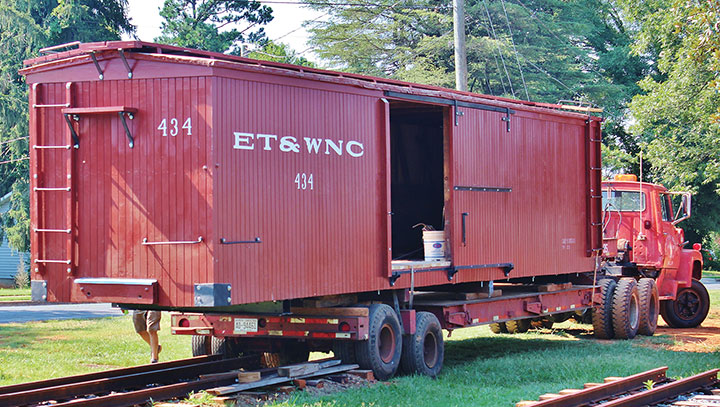
-Photo by James Glenn.
A boxcar from the famous East Tennessee & Western North Carolina Railroad had been sitting on the grounds of Allaire State Park in New Jersey since the early 1960s. In 2009, the Alexander Chapter acquired the car and returned it to North Carolina. Word circulated that a standard gauge 2-6-0 ALCO steam locomotive that originally belonged to the Virginia-Carolina Chemical Company needed a new home. It arrived on the property in 2011, just as the pavilion was being constructed, and three sets of dual gauge tracks laid. That was the status of the project when the 31st National Narrow Gauge Convention occurred in Hickory, North Carolina, in 2011, just a few miles up the road.
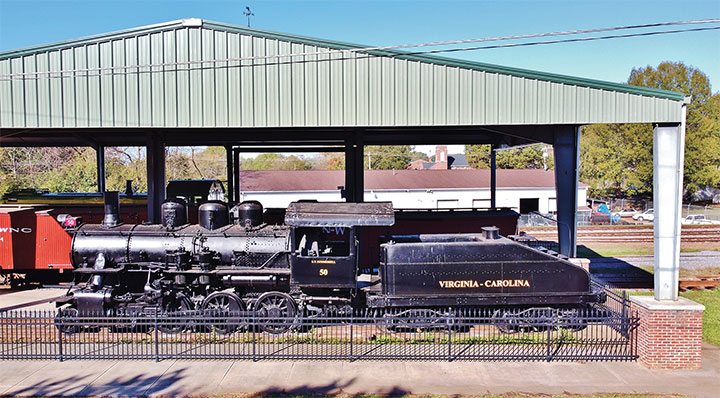
-Photo by James Glenn.
A lot has happened since Convention attendees last visited. The C&L/C&N-W boxcar and the ET&WNC boxcar were moved down to the museum as they were finished. ET&WNC Motor Car #2, a large standard gauge motor car dating back to 1940, was purchased and restored to operation. (The Chapter owns ET&WNC Motor Car #1 as well, and an effort is underway to return that car to narrow gauge configuration.) A West Side Lumber Company log car was acquired and rebuilt, intending to represent the various logging companies that operated in the mountains north of the museum.A rare 1901 West Virginia Midland baggage car was saved from the forest and meticulously restored. Parts from a collapsed private car from the same railroad await reconstruction into a complete car. A rare tank from an 1890 standard gauge tank car has been saved and needs only a new wooden flatcar under it to be displayed. Four boxcars built by the previously mentioned Lawndale Ry have been acquired and moved to an offsite location and will be restored.
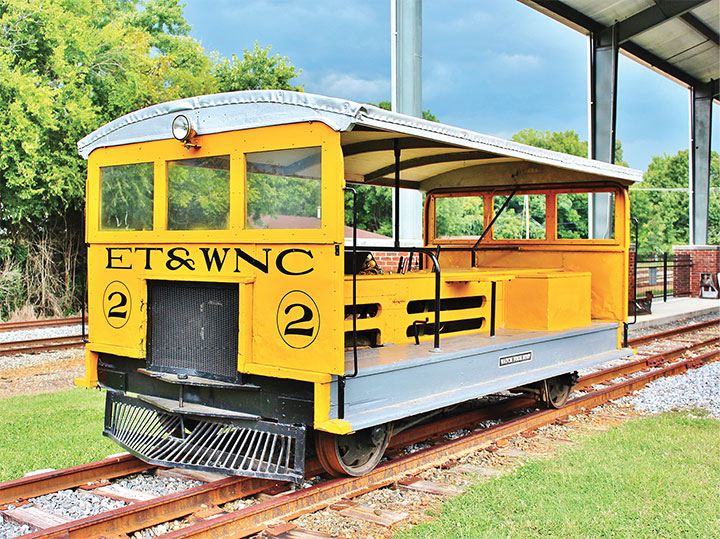
-Photo by James Glenn.
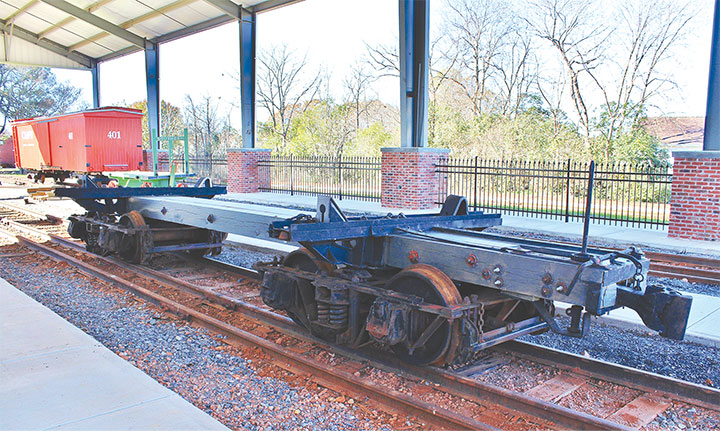
-Photo by James Glenn.
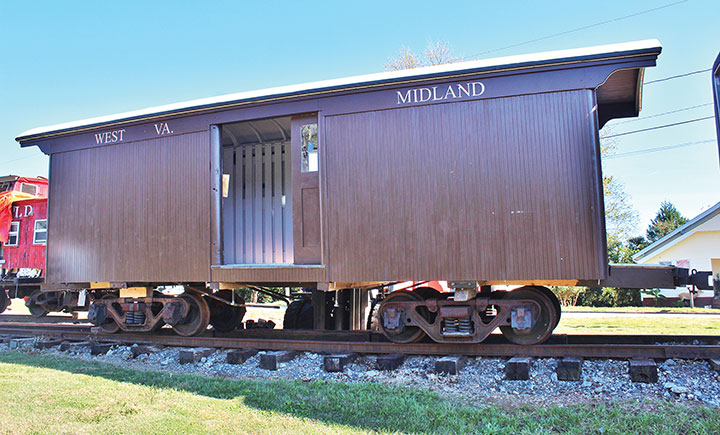
-Photo by James Glenn.
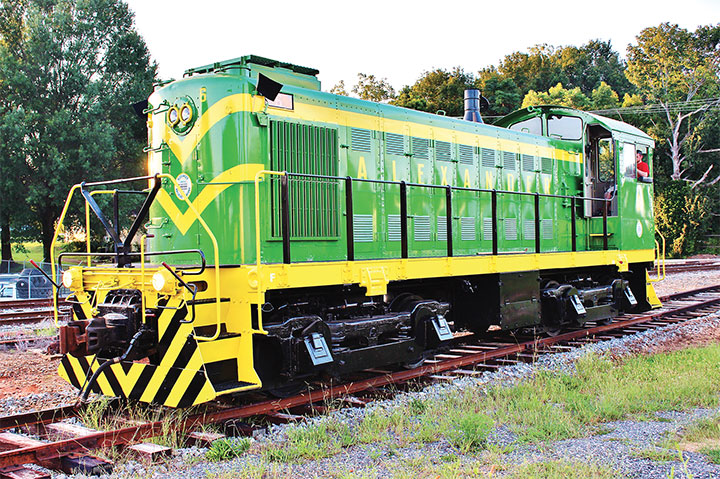
-Photo by James Glenn.
Larger items recently acquired include an ALCO S-3 Diesel switcher, which still operates and will be running during Convention Week in September. Also new is an Amtrak dining car that originally operated on the California Zephyr in the 1950s. It is hoped that the diner will be open for meals for Convention attendees. Finally, the museum owns an operational 1917 era Model T Ford depot hack, which operated in the area for many years.
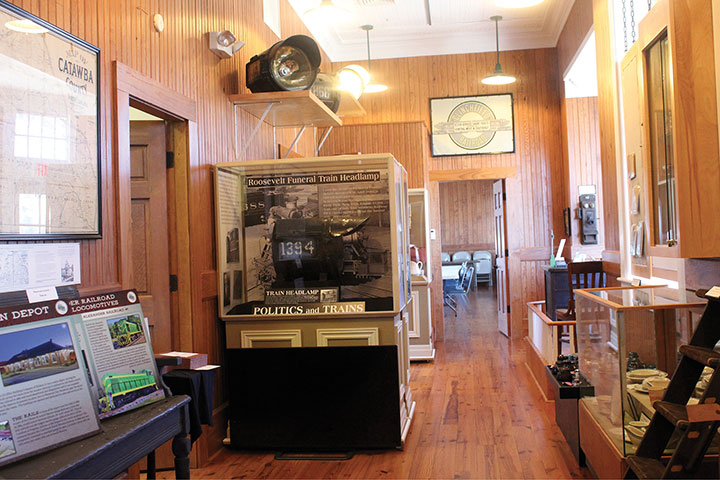
-Photo by Johnny Graybeal.
While the outdoor exhibits have increased, the museum inside the depot has grown as well. The exhibits now occupy half of the entire building, and the quality of the exhibits has improved tremendously. The museum has an interactive display that allows much more than just the current items to be shared with the public. The model railroad elements have been moved to an adjacent building and greatly expanded. There are currently five layouts running, with a large HO/HOn3 layout under construction, which will represent the various railroads of the region over 100 years ago.
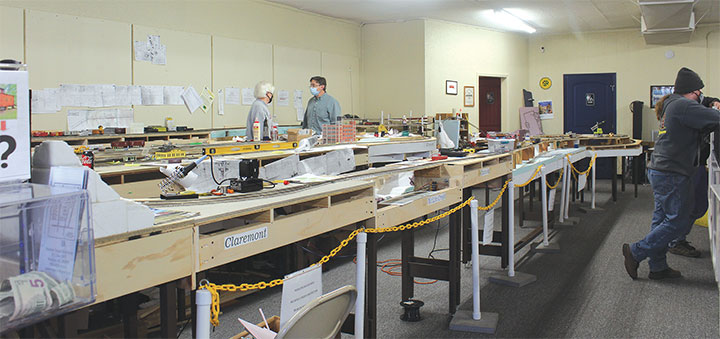
-Photo by Johnny Graybeal.
The Southeastern Narrow Gauge & Shortline Museum is located just a few miles south of Exit 130 on Interstate 40 in Newton, North Carolina. It is normally open on Fridays and Saturdays and is free to the public. Those attending the 41stNNGC in Hickory will be less than 10 miles from the museum and are invited to visit during open hours in the afternoon. Special events are planned as well.



